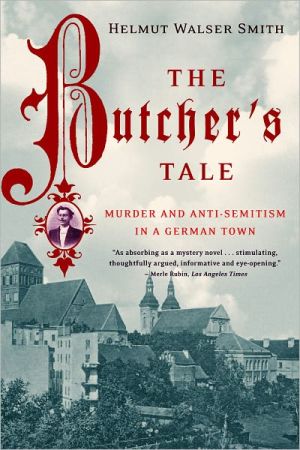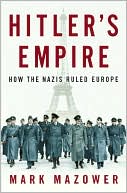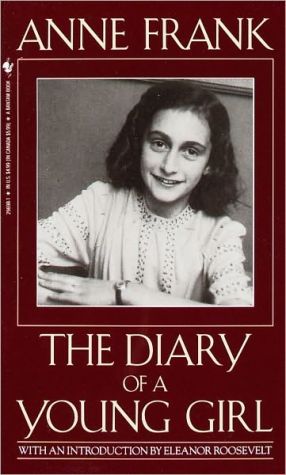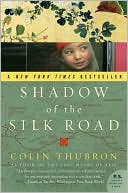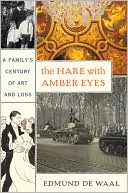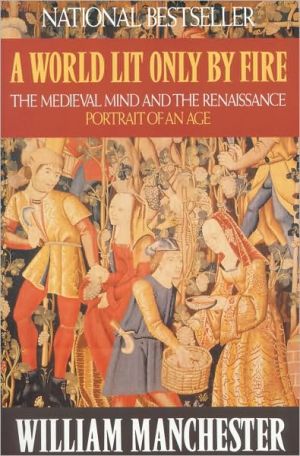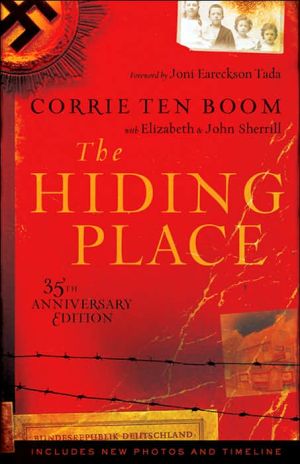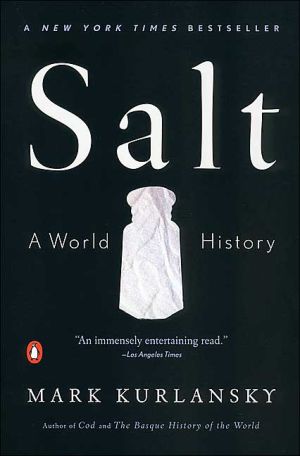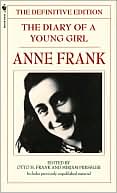The Butcher's Tale: Murder and Anti-Semitism in a German Town
In 1900, in a small Prussian town, a young boy was found murdered, his body dismembered, the blood drained from his limbs. The Christians of the town quickly rose up in violent riots to accuse the Jews of ritual murder—the infamous blood-libel charge that has haunted Jews for centuries. In an absorbing narrative, Helmut Walser Smith reconstructs the murder and the ensuing storm of anti-Semitism that engulfed this otherwise peaceful town. Offering an instructive examination of hatred, bigotry,...
Search in google:
One of the most dramatic explorations of a German town in the grip of anti-Semitic passion ever written. Cynthia Ozick An extremely significant study that will have a very big impact.
\ The Forward“Chilling...reads like a thrilling true-crime story.”\ \ \ \ \ Cynthia OzickAn extremely significant study that will have a very big impact.\ \ \ Peter Gay[B]rilliantly brings this collective madness to life...a lucid exemplar of social and cultural history at its best.\ \ \ \ \ Stephen GreenblattAn illuminating microhistory of a chilling event: a gruesome murder in a small German town.\ \ \ \ \ Publishers WeeklyTwo residents out for a stroll in Konitz, Germany, in March 1900, discovered a carefully tied package in a nearby lake. Its contents, the upper torso of a missing youth, set off a chain of events that brought national attention to an unremarkable village on the eastern edge of the Austro-Prussian empire. After weeks in which no suspect or motive was offered, the vacuum began to fill with rumor; the flames were fanned by the arrival on the scene of anti-Semitic journalists, and soon most of Konitz was convinced that the death was a Jewish ritual murder. A police inspector from Berlin suspected the town's Christian butcher; he and his allies in turn accused the Jewish butcher. Mobs began a series of violent acts against Konitz's Jews, and the Prussian army was called in to quell the violence. Smith, who teaches German history at Vanderbilt, does a masterful job exploring the history of the blood libel (the charge that Jews commit ritual murder of Christian children), as well as of community and how people band together to bring about great good or in the case of Konitz genuine evil. Yet, Smith argues that Konitz should be seen as a case study of "process," of how different forces came together to make "latent anti-Semitism manifest," causing peaceful townspeople to turn on their neighbors. Drawing on a remarkably detailed documentary record, Smith analyzes social, class and other factors in the violence the role of the middle vs. working classes, Protestants vs. Catholics and in an original piece of analysis, shows how the townspeople's response was itself a form of ritual murder. Although classed by the publisher as historyJudaica, this powerful volume will also appeal to true-crime readers and anyone interested in the dynamics that can turn a peaceful community into a place of hatred and violence. Map, illus. not seen by PW. (Aug.) Copyright 2002 Cahners Business Information.\ \ \ \ \ Library JournalThe invocation of the term ritual murder seems an echo of a distant, barbaric past, the stuff of superstition and wild fancy. Yet in eastern Germany, at a time characterized by industrialization and scientific advancement, such barbaric echoes resounded all too often. In this book, Smith (German Nationalism and Religious Conflict: Culture, Ideology, Politics, 1870-1914) explores the murder of young Ernst Winter in the West Prussian town of Konitz on March 11, 1900. Though the authorities suspected the Christian butcher, Gustav Hoffmann, the Christian townspeople suspected a Jewish conspiracy to kill Winter and acquire his Christian blood for their Passover matzo. It is remarkable in this pre-Hitlerian Germany that the government actually protected Konitz's Jews from the angry rioters and refused to entertain the absurd idea of ritual murder. Smith has painstakingly explored the motives of all key actors in this drama. Text and bibliography are both copiously annotated. Imbued with an appropriately eerie atmosphere, this is a murder mystery with no solution, a striking re-creation of a gruesome and sad episode. Recommended for public and academic libraries. Michael F. Russo, Louisiana State Univ. Lib., Baton Rouge Copyright 2002 Cahners Business Information.\ \ \ \ \ Kirkus ReviewsA braided and illuminating study of local-level anti-Semitism and its insinuation into the life of a small town in early 20th-century Germany. In 1900, in Konitz, West Prussia, a young man was killed, his body dismembered, and the parts distributed about the town, neatly wrapped in packing paper. A rumor soon took shape: It was an act of ancient blood libel, the ritual slaughter of Christian children by Jews to use their blood in the baking of Passover matzo. Riots and acts of violence against the Jewish community followed, and Smith (History/Vanderbilt University) has taken as his task to discern the motives behind the anti-Semitism, twining together the many threads with the dexterity of a lace-worker. He sees the phenomenon as a "process," making "latent anti-Semitism manifest, transforming private enmity and neighborly disputes into bloodstained canvases of persecutory landscapes." The townspeople fabricated tales against a Jewish butcher; an anti-Semitic press fanned the tales into a collective narrative of good and bad, respectable and low, light and dark; anti-Semitic political groups exploited archaic layers of hatred and superstition, fashioning an allegory of the dangers of social pollution. Smith follows both the course of Jewish relations with the German state, which was markedly liberal in 1900, and the history of such symbols as ritual murder and how they play and endure across the popular imagination. As well, he charts the mutual influence of oral and print cultures, the creation of a spectacle, economic and class factors, and, most importantly, "the dynamics of personal power, with Christians typically asserting power over the Jews they worked for, or had once beeninjured by, or . . . had once been in love with." A unifying theme can be found in the "human relationships" and the way they "target the weak points in the overall system of relations." A dreadful augury, critically and masterfully told.\ \
